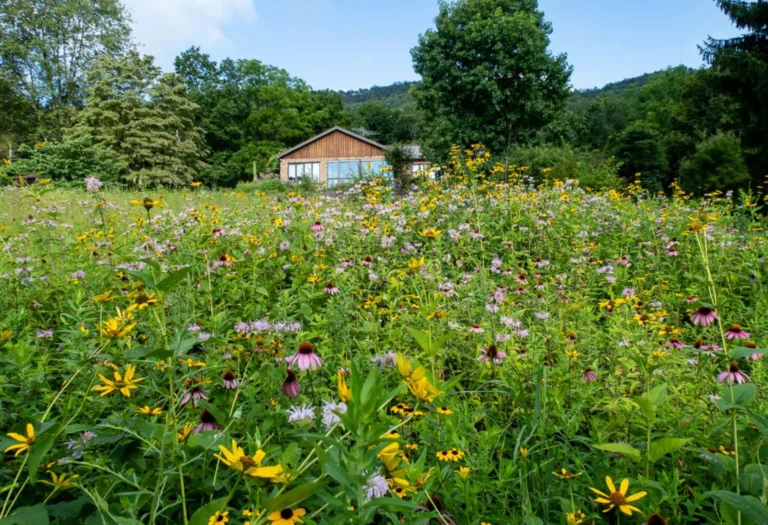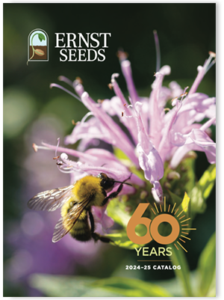America loves a good lawn. A lush green lawn is a symbol of the American Dream; it’s been that way ever since the country’s post-World War II economic expansion.
As the suburbs boomed, so did the idea of trying to grow the best lawn in the neighborhood. Any company that had a lawn usually hired professional landscape architects to keep it in excellent shape. The same practice was commonplace for park directors in towns and cities across the U.S. A good lawn was — and still is — a status symbol for homeowners, municipalities and businesses. However, as we’ve learned more about traditional turfgrass and its alternatives in the past two decades, there’s been a slow but notable shift toward options beyond a conventional lawn. Now, some are taking a more laissez-faire approach to landscaping — and it’s saving them money while revitalizing pollinator habitats and other important parts of the environment.
Native Plants Help the Average American Save Water
Budgets are tightening and individuals are becoming more aware of water consumption. Now people are warming to the idea of allowing wildflowers and native plants to grow in their yards rather than turfgrass lawns.
That’s because watering a lawn these days requires too much water. According to the EPA, if you were to water the average American lawn for 20 minutes every day over a week, it’d be equivalent to taking more than 800 showers. That’s a shocking number, and it’s too much to ask of the American household when that water and money could be better used elsewhere.
Now, that’s not to say we should get rid of lawns. Like the Ford Thunderbird, which became as popular as turfgrass did, there is still a place for a perfectly kept lawn. But, more practical and economical options have arisen for those searching for an alternative.
Low Landscaping Budget? No Problem
Saving money by using less water is only part of the economic benefit of a more laid-back style of lawn care. Planting native vegetation and wildflowers decreases the need for traditional landscaping requirements like regular mowing, watering and trimming. This is making it popular not only among homeowners, but businesses, colleges and municipalities as well. And whether you’re a homeowner, city treasurer or a CFO — everyone can unite behind a lower operating budget.
The reason more people are considering native wildflowers and plants is simple: labor and equipment costs are lower when native plants are grown in place of a traditional turf lawn. Installing a turfgrass field is estimated to cost about $4,000-$8,000 per acre. On the other hand, a full installation of native grasses and other plants runs for about $2,000-$4,000. Boom! 50% off, plus fewer long-term maintenance costs. These types of savings have already been effective, too.A city in Quebec lowered landscaping costs by more than 33% by reducing their mowing frequency.
Alternatives to Turfgrass Are More Environmentally Friendly
While our cars are making the transition to hybrids and electric vehicles, unfortunately, America’s supply of lawn equipment chugs far behind when it comes to the impact on the environment. Lawnmowers and weedwackers are largely still running on mixes of gasoline and oil/ethanol. It’s believed that one hour of lawn mowing pollutes more than driving a car at even the highest speed limits. If lowering emissions is a priority, one way some of us could improve is by cutting back on our use of heavy-duty lawn equipment.
Water filtration rates will also increase when native plants are grown in place of turfgrass lawns. This improves soil health and helps reduce runoff, leading to healthier plants and flowers as the years pass. That’s before factoring in the damage done to areas by some commercial pesticides. It often requires commercial-size levels of pesticide to treat the lawns that cover our city parks, college campuses and business malls. It gets rid of bugs. But it also comes with an environmental impact.

Pollinator Habitats Rely on Native Plants
Saving water and lowering emissions is a great start, but introducing native plants and wildflowers is proving to have the greatest environmental impact. It’s well-known that the bee population in the United States has experienced a catastrophic decline over the past two decades. Introducing plants natural to the ecosystem around you will attract all types of pollinators (it’s not just bees and butterflies), and local populations will increase. Imagine it as a simple way to “think globally, act locally” by promoting more biodiversity in your yard.
And if you don’t know what type of seeds to plant, use the plant lists and collection to view state-by-state species recommendations from the Lady Bird Johnson Wildflower Center.
Creating a Better Environment, One Lawn at a Time
Environmental progress doesn’t have to mean the elimination of lawns. That’s certainly not the suggestion here. But as we learn more and our society adapts with the times, using native vegetation as an alternative to turfgrass as a way to save time, money and boost the health of the local ecosystem is becoming a more practical option in more situations. If you’re considering planting, growing and maintaining a pollinator-friendly array of native plants, use a link to the resources page to find the Ernst seeds that are local to your ecosystem.


